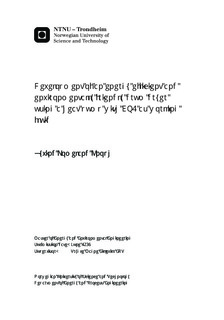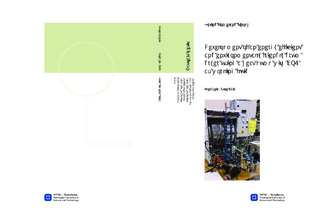| dc.contributor.advisor | Eikevik, Trygve Magne | nb_NO |
| dc.contributor.author | Knoph, Øyvind Lomeland | nb_NO |
| dc.date.accessioned | 2014-12-19T11:52:31Z | |
| dc.date.available | 2014-12-19T11:52:31Z | |
| dc.date.created | 2014-09-13 | nb_NO |
| dc.date.issued | 2014 | nb_NO |
| dc.identifier | 746616 | nb_NO |
| dc.identifier | ntnudaim:11293 | nb_NO |
| dc.identifier.uri | http://hdl.handle.net/11250/235684 | |
| dc.description.abstract | The drum dryer is a common appliance for drying clothes in households today. It is constantly developed in order to reduce its environmental impact and energy consumption. An industrial partner has initiated a research project with the aim to substitute R134a with CO2 as refrigerant. R134a has a global warming potential (GWP) 1300 times the GWP of CO2, thus CO2 is a much more environmental friendly refrigerant. A drum dryer driven by a heat pump was previously modified to use CO2 as refrigerant. This system has now been further developed to include a two-stage compressor and a liquid separator at an intermediate pressure. The flash gas is separated on the intermediate pressure stage and injected into the compressor. Theoretically the result should be a higher mass flow on the high-pressure stage and reduced work required for 1st stage compression. Closing a blocking valve at the intermediate stage can disable the flash gas recycling process. This gives the opportunity to compare the results to the results from a regular cycle.The results from the experiments in this study are compared to results from similar experiments. Results are available from experiments by former students and initial tests by the industrial partner. The industrial partner also provided an ultimate goal of 0.26 kWh/kgtextiles, which is the state of the art consumption for R134a heat pumps. The two main performance measures are specific energy consumption based on weight of the textile load and specific energy consumption based on weight of the removed water. The best experiment in this study consumed 0.37 kWh/kgtextiles and 0.61 kWh/kgremoved water. These results were achieved by disabling the flash gas injection. The corresponding results using flash gas injection were 0.41 kWh/kgtextiles and 0.70 kWh/kgremoved water. In the current setup the flash gas injection has not contributed to reduced energy consumption. There has been a challenge to control the flash gas injection while keeping the superheat low out of the evaporator. Suitable modifications have been suggested to overcome this issue. | nb_NO |
| dc.language | eng | nb_NO |
| dc.publisher | Institutt for energi- og prosessteknikk | nb_NO |
| dc.title | Development of an energy efficient and environmentally friendly drum dryer using a heat pump with CO2 as working fluid | nb_NO |
| dc.type | Master thesis | nb_NO |
| dc.source.pagenumber | 111 | nb_NO |
| dc.contributor.department | Norges teknisk-naturvitenskapelige universitet, Fakultet for ingeniørvitenskap og teknologi, Institutt for energi- og prosessteknikk | nb_NO |

